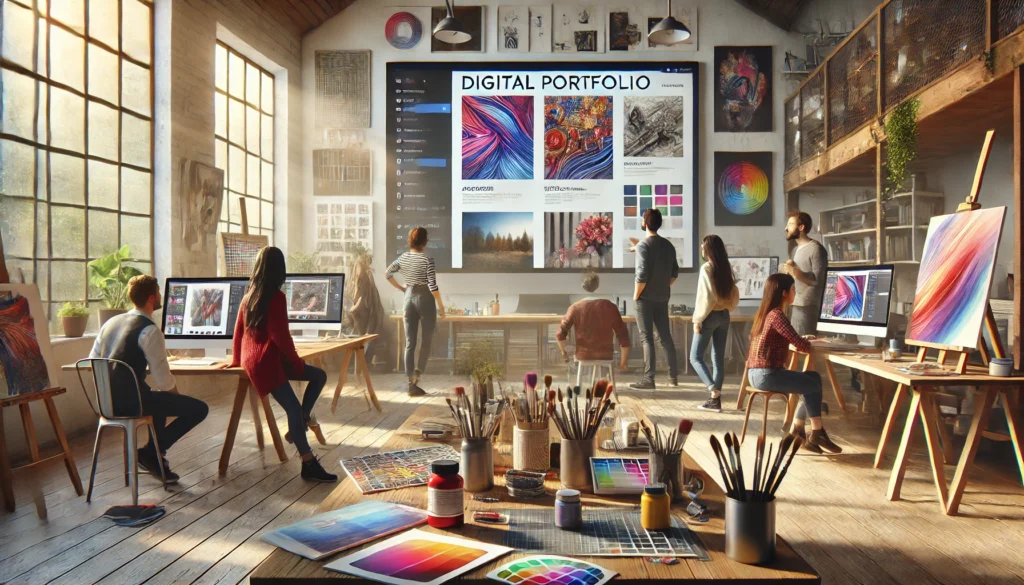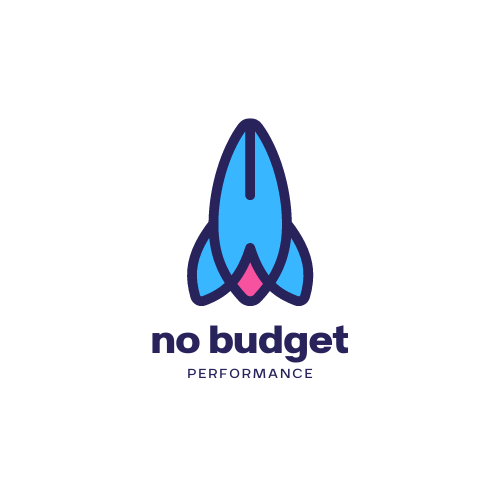Creating Digital Portfolios to Showcase Performances
As a performer, your art speaks volumes on stage—but how do you make it resonate beyond the curtain call? In today’s digital world, having captivating digital portfolios is just as essential as perfecting your craft. Whether you’re an actor, musician, dancer, or spoken word artist, showcasing your talent online can mean the difference between getting booked for your next gig or being overlooked.
The challenge? Many performers struggle with building an online presence that truly reflects their artistry. Where do you start? What’s the best way to present your work? And how can you make sure the right people—agents, directors, and audiences—find you?
This guide will walk you through creating a digital portfolio that highlights your unique performances, tells your story, and makes a lasting impression. With the right tools and strategies, you’ll build a visually stunning and professional showcase that captures attention and opens doors. Let’s get started!

Understanding the Purpose of a Digital Portfolio
A well-crafted digital portfolio serves as your virtual stage, showcasing your talent in a way that is accessible to casting directors, event organisers, and potential collaborators. Unlike a traditional resume, a digital portfolio allows performers to integrate multimedia elements—videos, audio recordings, and images—to create an immersive experience highlighting their artistic identity and professional achievements.
In Australia, the significance of a digital portfolio for performers is underscored by the nation’s increasing digital engagement. In 2020–21, digital activity contributed 6.1% ($118.0 billion) to Australia’s economy, reflecting a growing integration of digital platforms across various sectors.
Furthermore, research by the Australia Council for the Arts highlights a rising trend in digital arts engagement, which has been accelerating over the past two decades and was further amplified by the COVID-19 pandemic. This shift indicates that audiences increasingly access and appreciate performances through digital portfolios and other online mediums.
Why It Matters
- Your portfolio is a first impression tool, often viewed before auditions or gigs.
- It helps you stand out in a competitive industry, offering a professional edge.
- It provides easy access to your work, removing barriers for industry professionals looking to evaluate your talent.
Key Elements of a Strong Digital Portfolio
A strong digital portfolio is more than just a collection of work—it’s a strategic presentation of your artistic identity. It should captivate visitors, highlight your best performances, and make it easy for industry professionals to connect with you.
Here are the essential elements to include:
- High-Quality Performance Videos & Images – Showcase your most compelling work with crisp, professional footage. Ensure your videos are well-lit and properly edited, as poor-quality visuals can detract from your talent. A mix of live performances and studio recordings can provide a well-rounded view of your skills.
- A Captivating Biography – Your bio should be engaging yet concise, telling the story of your artistic journey, training, and achievements. Personalising it with details about your inspiration and creative process can make it more relatable.
- Testimonials & Press Mentions – Credibility is crucial in the arts industry. Featuring quotes from industry professionals, mentors, collaborators, or audience members can boost your reputation. If you’ve been featured in media or received awards, highlight them prominently.
- Contact & Booking Details – Ensure that potential clients, directors, or agents can easily reach you. Provide multiple contact options, including email, phone, and social media links, and consider embedding a direct booking form.
- SEO-Optimised Content – Use relevant keywords naturally throughout your portfolio to improve its search engine ranking. Optimising video titles, image descriptions, and bio text ensures that your work is discoverable by industry professionals.
- Regular Updates – Keep your portfolio current by adding new performances, press mentions, and testimonials. An outdated portfolio can make you appear inactive in the industry.
By integrating these elements, your digital portfolio will serve as a powerful tool that not only showcases your talent but also increases your chances of securing new opportunities.
Choosing the Right Platform for Your Portfolio
Selecting the right digital portfolio platform is crucial to how your work is displayed and discovered. The best option depends on your artistic needs, technical skills, and how much control you want over your online presence.
Top Platform Choices for Performers
- Website Builders (Wix, WordPress, Squarespace) – Best for those wanting a personalised domain and full creative control over layout and branding.
- Creative-Specific Platforms (Behance, Adobe Portfolio) – Ideal for visual artists and designers, but can also work for multimedia performers.
- Social Media Portfolios (Instagram, TikTok, YouTube) – A practical choice for performers who thrive on audience interaction and viral content.
- Self-Hosting vs. Third-Party Platforms – Hosting your site provides flexibility and ownership, while third-party sites offer built-in audiences but less control.
Choosing Wisely
- If you need a polished, custom look, go for website builders.
- For quick updates and audience engagement, social media platforms work best.
- If you want both control and a professional feel, a self-hosted WordPress site may be ideal.
Your digital portfolio is an extension of your artistry—choose a platform that allows your performances to shine while remaining accessible to industry professionals.
Step-by-Step Guide to Creating a Digital Portfolio
Creating a digital portfolio requires a structured approach to ensure that your performances are presented in the best possible way. Follow these quick steps to build a compelling online showcase.
First Step: Define Your Portfolio’s Theme and Style
- Identify your artistic niche and reflect it through a consistent visual theme.
- Choose a colour scheme, typography, and layout that complements your performance style.
- Ensure the overall look is cohesive and professional, while still allowing your personality to shine.
Second Step: Organise Your Best Performances
- Curate a selection of high-quality videos, images, and audio clips that showcase your strongest work.
- Use categories or sections to differentiate between genres, collaborations, or projects.
- Avoid clutter—less is more when guiding visitors to your best content.
Third Step: Write a Captivating Biography
- Keep it concise yet engaging, covering your background, artistic journey, and achievements.
- Add a personal touch by sharing your creative inspiration and unique storytelling approach.
- Use keywords naturally to enhance search engine visibility.
Fourth Step: Add Testimonials and Press Features
- Incorporate quotes from clients, collaborators, and audience members to establish credibility.
- Highlight any media mentions, interviews, or awards to strengthen your professional reputation.
- Position testimonials prominently on your homepage or in a dedicated section.
Final Step: Optimise for SEO and Mobile Accessibility
- Use SEO-friendly titles, descriptions, and image alt text to improve search rankings.
- Ensure fast load times by compressing images and videos without sacrificing quality.
- Make your site mobile-responsive so visitors can easily access your content on any device.

These steps ensure you create a digital portfolio that not only reflects your artistry but also enhances your online discoverability.
Must-Have Features for an Engaging Digital Portfolio
An engaging digital portfolio goes beyond showcasing performances—it creates an immersive experience that captivates audiences and industry professionals alike.
Here are the must-have features that will make your portfolio stand out.
1. High-Quality Visuals and Audio
- First impressions matter. Ensure your portfolio features clear, high-resolution images and professionally recorded videos.
- Avoid grainy, low-quality visuals—presentation reflects your artistic standard.
2. User-Friendly Navigation
- Structure your portfolio logically so visitors can easily find key sections such as performances, testimonials, and contact details.
- Use clear menus and categories to differentiate between different types of content (e.g., live performances vs. studio recordings).
3. Mobile-Friendly and Fast Loading Speeds
- Most users will access your portfolio on mobile devices—choose a responsive design that adapts to different screen sizes.
- Optimise images and videos to reduce load times, ensuring a seamless browsing experience.
4. Contact and Booking Options
- Include multiple ways for people to reach you (contact forms, social media links, email, direct booking options).
- Make it easy for event organisers, agents, or potential collaborators to get in touch immediately.
A compelling digital portfolio is more than a gallery—it’s an interactive, accessible space that makes it easy for people to engage with your work. Prioritising these features ensures your portfolio serves as a powerful tool to grow your career.
Promoting Your Portfolio & Driving Traffic
Creating a digital portfolio is just the first step—getting it seen by the right audience is what truly makes an impact. Here are actionable strategies to promote your work and drive traffic to your portfolio.
1. Use Social Media for Maximum Exposure
- Share performance highlights on Instagram, TikTok, and Facebook to engage followers.
- Use relevant hashtags like #PerformancePortfolio #DigitalShowcase to improve discoverability.
- Post short teaser clips and links to your full portfolio for deeper engagement.
2. Utilise YouTube as a Showcase Tool
- Upload full performances and behind-the-scenes content to YouTube.
- Optimise video titles and descriptions with keywords to enhance search visibility.
- Include a direct link to your portfolio in video descriptions.
3. Network with Industry Professionals
- Reach out to event organisers, agents, and fellow performers.
- Join online forums and communities where performance artists share their work.
- Collaborate with peers and cross-promote each other’s portfolios.
4. Keep Your Portfolio Fresh and Updated
- Regularly add new performances, testimonials, and media mentions.
- Update SEO elements to maintain search ranking visibility.
- Ensure all contact details remain current for potential inquiries.
With consistent promotion, your digital portfolio will become a powerful tool for expanding your reach, attracting new opportunities, and growing your audience.
Your Digital Portfolio: A Gateway to New Opportunities
A well-crafted digital portfolio is more than just an online gallery—it’s a powerful marketing tool that puts your talent in front of the right people. By carefully curating your work, choosing the best platform, and optimising for visibility, you create a dynamic showcase that works for you 24/7.

Now that you have the steps and strategies to build an engaging portfolio, it’s time to take action. Start by selecting your strongest performances, setting up a user-friendly layout, and making it easy for potential collaborators and clients to reach you.
Don’t let your talent go unnoticed. Begin crafting your digital portfolio today and open the door to exciting new opportunities. Need help setting up a professional portfolio that truly stands out? Visit No Budget Performance to explore expert-designed solutions tailored for performers like you.
Your artistry deserves the spotlight—let’s make sure it gets seen.
